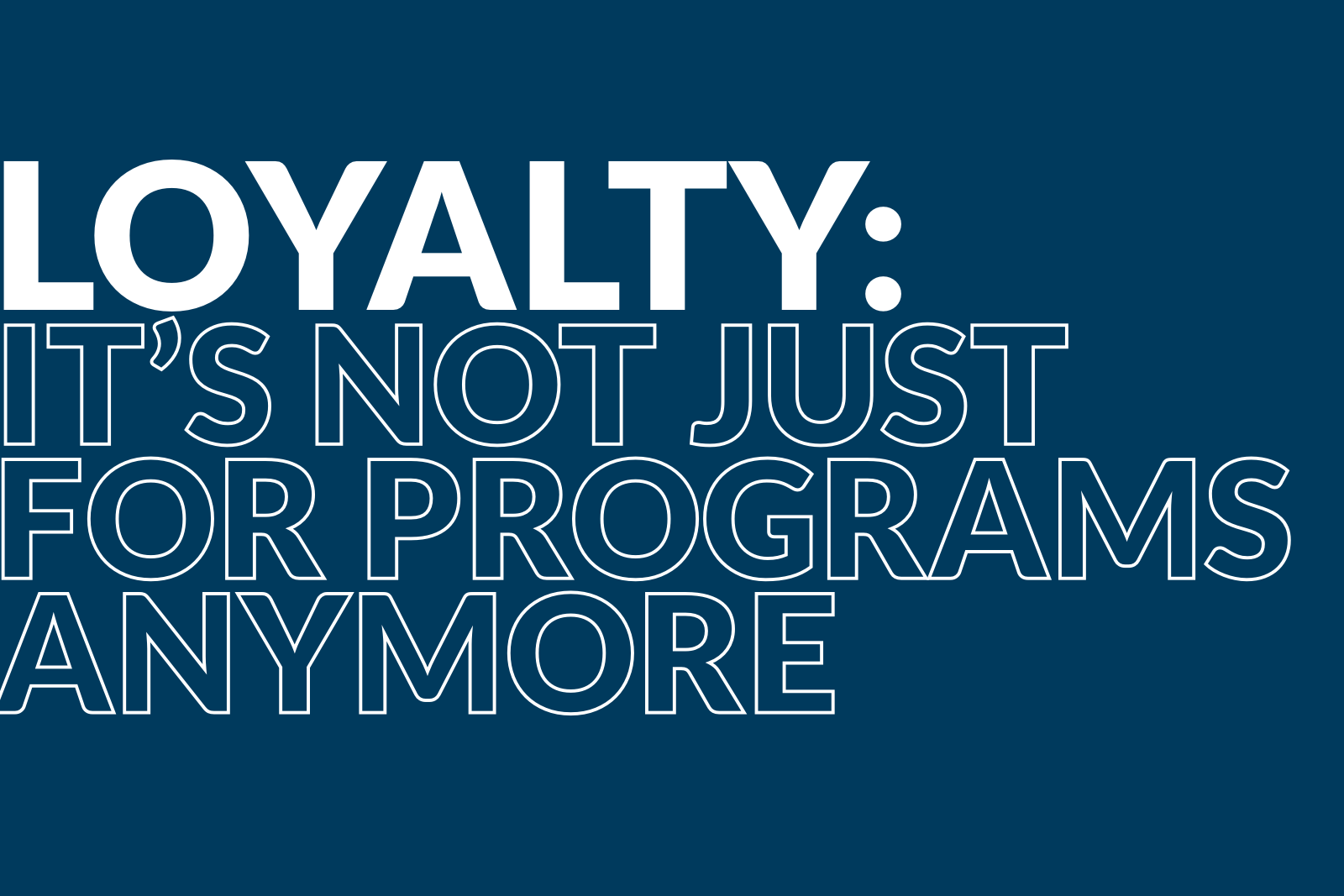DTC Loyalty Strategies Forge Lasting, Profitable Relationships

Shifting consumer needs disrupted the retail status quo.
In the direct-to-consumer (DTC) category, brands are adapting their e-commerce strategies and capabilities to keep pace with consumer preferences. Those changes are happening at digital-first brands (e.g., men’s wellness site Hims and skin-care provider Glossier) as well as retail-based brands (e.g., Nike and P&G).
While e-commerce had already been growing in recent years, it was accelerated during the pandemic by the required stay-at-home lifestyle. A decade ago, the market was ripe for challenger brands to move into the DTC space, where they could take advantage of low competition, funding opportunities, and an efficient advertising-buying model.
Digital-first brands made an immediate impact on the marketplace by offering personalization and enhanced digital experiences that better met consumer needs. Retail’s old guard saw declining sales as customer behaviors pivoted toward digital. Traditional retailers weren’t offering the same emphasis on the customer experience, and they offered an inconsistent inventory.
As established champion brands meet digital challengers on this new playing field, each is forced to update its strategies.
Traditional retailers are upping their e-commerce game, but digital-first brands find ways to stay ahead, such as:
-
Moving to subscription-based models to focus on customer retention, as eyeglass retailer Warby Parker and other retailers have done.
-
Increasing their footprint by opening physical stores or partnering with traditional retailers to distribute their products (e.g., Casper at Mattress Firm).
-
Expanding into new categories by diversifying product offerings through iteration or new product expansion — like Away, which expanded beyond luggage to the broader market of travel products.
Continued strategic adaptation from digital brands has pressured retail-based brands to revise and improve their e-commerce platforms and forge their way into the DTC space. Retail-based brands are refocusing on meeting buyer preferences to create better experiences and regain market share.
Nike has been investing in DTC since 2011 and was one of the biggest retailers to revise its strategy to include a significant DTC segment before the pandemic. It’s now a retail market leader in DTC, which accounted for 35% of its total sales in 2020. Since announcing its Consumer Direct Acceleration strategy in June 2020, it has started shutting down wholesale accounts — including Amazon — which gives Nike more control of the brand experience and prioritizes its DTC channels.
Other retail-based brands have made significant DTC transitions by emphasizing their e-commerce platforms in response to changing consumer demand during the pandemic.
-
Kraft Heinz created its first DTC platform — the Heinz to Home subscription service — which offers bundles of shelf staples, from beans and soup. The service provides safe delivery options for customers unwilling or unable to travel to a store.
-
PepsiCo focused on differentiation in its DTC strategy by creating two unique websites, Snacks.com and PantryShop.com, where customers can order specialized bundles of their favorite pantry items or snacks. Because the websites are built on internal platforms, PepsiCo can leverage customer feedback and digital data to optimize the sites and inform their retail operations.
-
Impossible Foods responded to grocery store quotas on meat by launching its own DTC website to sell Impossible Burgers directly to consumers and take advantage of the increase in health-conscious cooking at home.
Kraft Heinz, PepsiCo, Impossible Foods, and others designed DTC strategies to win the transaction. Now the brands need to turn those transactions into ongoing consumer relationships.
The next step is leveraging new opportunities to build rational and emotional connections with DTC customers.
As brands expand their e-commerce capabilities and build strong marketable databases, they should consider additional steps to nurture loyal and profitable customer relationships.
-
Design data strategies to capture customer permissions to deliver meaningful communications and experiences.
-
Use first-party data to build business insights and optimizations that identify new opportunities for growth.
-
Develop CRM and loyalty strategies to deliver measurable and sustainable revenue growth through a greater share of wallet and increased retention.
-
Unlock advocacy by enabling loyal customers to share their love for the brand through social channels and reviews.
Leveraging these strategies — and building the capabilities to carry them out — can turn single transactions into lifelong relationships with your customers. These are the building blocks of consumer relationships that move customers beyond rational purchase decisions to emotional connections with your brand.
The Lacek Group is a Minneapolis-based, data-driven loyalty, experience and customer engagement agency that has been delivering personalization for its world-class clients for more than 30 years. The Lacek Group is an Ogilvy company.

